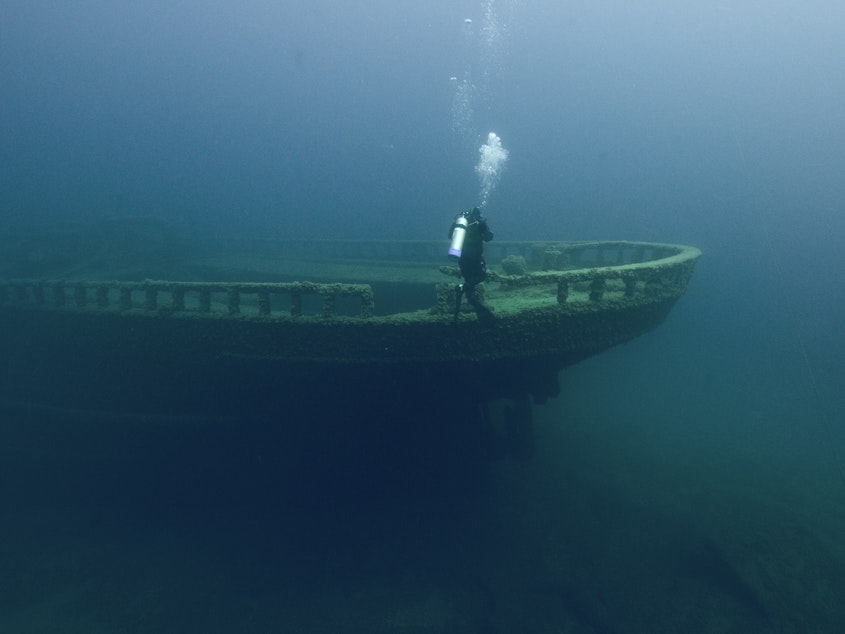Hudson Canyon, a giant underwater chasm, could be the newest national marine sanctuary

Good news for sea turtles: President Biden announced on Monday that he hopes to designate the aquatic Hudson Canyon as a national marine sanctuary.
About 100 miles southeast of New York City, Hudson Canyon is the largest underwater canyon in the U.S. portion of the Atlantic Ocean. It's also a biodiversity hotspot: home to sensitive species including sperm whales, cold-water coral and, yes, sea turtles.
Comparable in scale to the Grand Canyon, the site is occasionally more than seven miles wide and more than two miles deep at its lowest point. The site is also said to be the home of a number of shipwrecks, including freighters and U.S. military radar platforms, with some dating back to the 19th century.
Making the Hudson Canyon a sanctuary would mean that the federal government has more say in the types of activities allowed in the sanctuary. The rules will be developed after a public comment period.
"The canyon's rich biodiversity is integral to the region's economy," the government said in a statement, "underpinning commercial and recreational fisheries, recreational diving, whale-watching and birding."
Sponsored
The newest in a big system of underwater parks
Hudson Canyon is the second marine sanctuary Biden has backed, after advancing a proposal last year for the Chumash Heritage National Marine Sanctuary off the coast of central California.
Before he took office, Biden pledged to conserve 30% of U.S. land and water by 2030 — part of a global push to address climate change.
The national marine sanctuary system currently comprises 15 underwater parks and two national monuments in the United States, a network of more than 620,000 square miles of aquatic ecosystems.
"A sanctuary near one of the most densely populated areas of the Northeast U.S. would connect diverse communities across the region to the ocean and the canyon in new and different ways," Richard Spinrad, NOAA's administrator, said in a statement.
Sponsored
In addition to conservation and education, the agency said that the Hudson Canyon site could also be used as an environmental bellwether to monitor the effects of climate change.
The exact boundaries of the site — and an official designation — have yet to be finalized. The public can comment on the proposal online or at a series of virtual and in-person meetings over the summer.
Part of Biden's recent environmental push
Alongside the national sanctuary announcement, the administration said that the Department of the Interior will phase out the sale of single-use plastic products like bottled water in national parks and other public lands by 2032 — reviving a ban first proposed under the Obama administration that was later nixed by former President Donald Trump.
Biden has tried to make climate a central part of his policy, though he has been unable to get his most ambitious proposals through Congress. So he has turned to executive actions to try to advance his environmental agenda.
Sponsored
On Monday, Biden unveiled a number of other measures including a two-year tariff exemption for the U.S. solar industry, a move meant to mitigate the knock-on effects of a federal investigation that had dramatically reduced the number of new solar energy projects.
Biden also invoked the Defense Production Act to expand American solar panel manufacturing, as well as other clean energy technology like building insulation and efficient heat pumps for buildings. [Copyright 2022 NPR]



